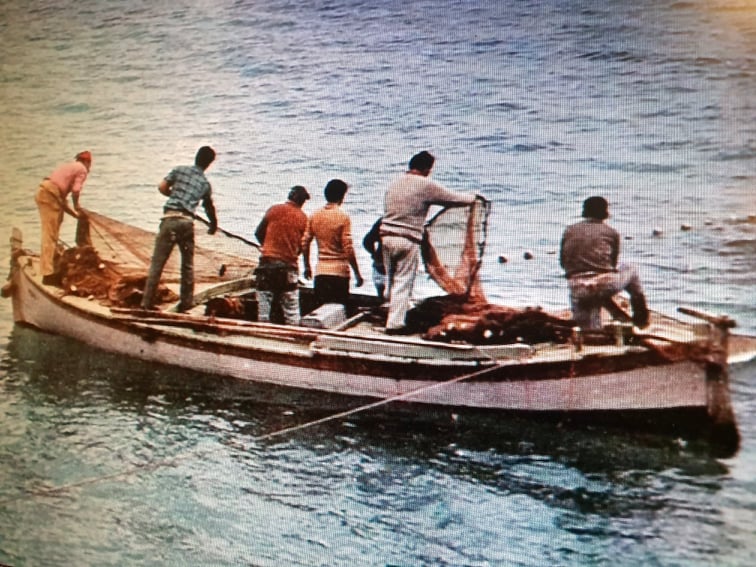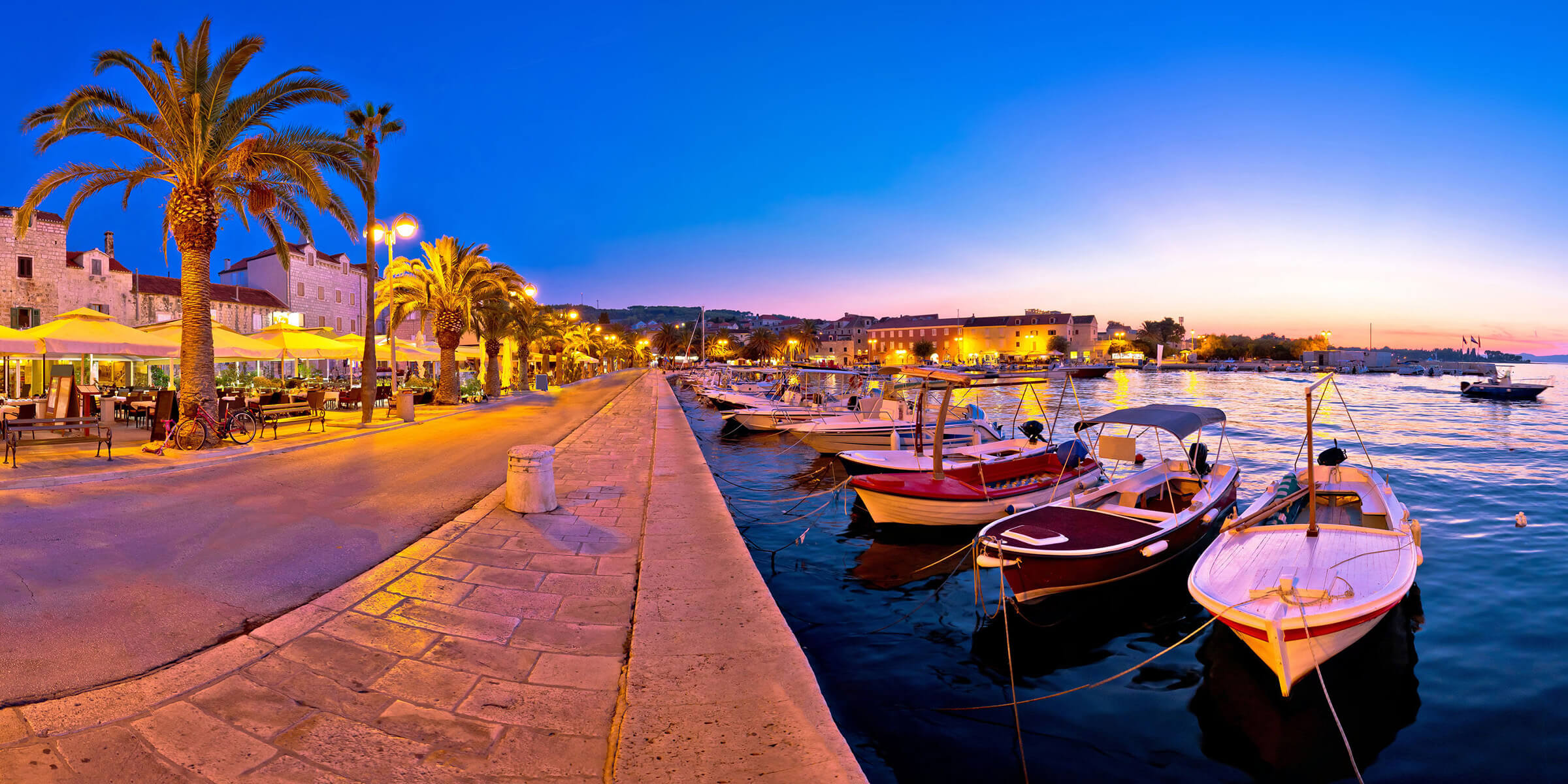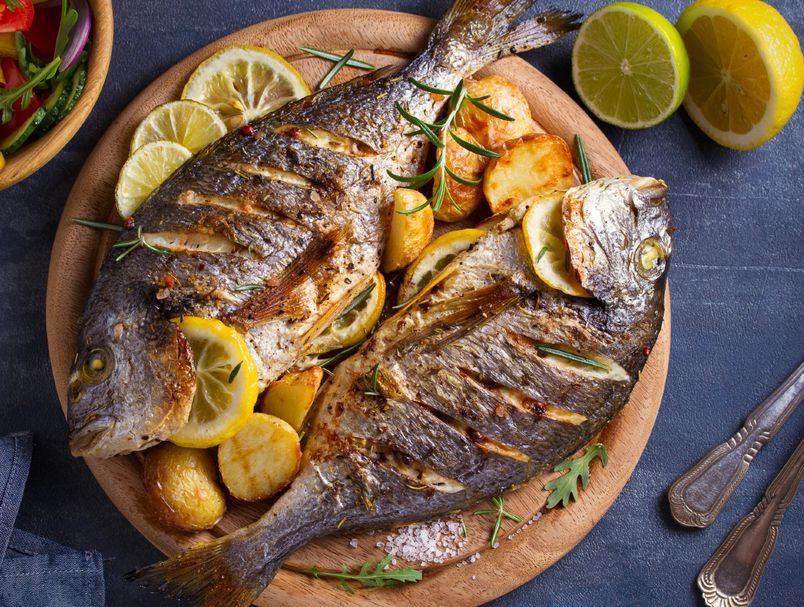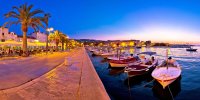
Brač Island
General information about the island of Brač
The island of Brač belongs to the group of central Dalmatian islands and is the largest among the Dalmatian islands. It is about 40 km long and on average 10-12 km wide; total area 395 km2. Today there are 22 settlements on Brač, 12 uninhabited and 5 abandoned settlements
It is 6 to 13 km from the mainland through the Brač Channel (maximum depth 78 m). In the west it is separated from the island of Šolta by the narrow Split gate, and in the south from the island of Hvar by the Hvar channel (depth 91 m). In its immediate vicinity on the mainland is the largest city on the eastern coast of the Adriatic Sea, Split.
Brač became world-famous thanks to its white Brač stone, which is used to make some of the world's most famous buildings, such as the White House or the parliament in Vienna and Budapest.
The economy includes agriculture, viticulture, olive growing, fishing and tourism.
CULTURE AND HISTORY OF BRAČ
The first inhabitants of the island were the Illyrians. They inhabited the interior of the island, where there are forts and numerous mounds on prominent hills.
The name of the island of Brač (Bratza, Brattia, Brectia, Brazza) probably owes its origin to one of the noblest animals - the deer.
The largest fortress on the island is Škrip. There are many archaeological finds from Roman times, especially at the sites of Roman quarries and their household goods.
Early Christian basilicas in Povlja, Lovrečina pri Postira, Postira, Supetar, Splitska and Pučišća are of great importance.
18 old Croatian churches on the hills from the 9th to the 12th century are of exceptional value.
A special type of monastery-church monuments from the 15th and 16th centuries are the Hlahol hermitages on the southern slopes of Brač. The most attractive of these monuments are the Dračia jaskyňa nad Murvicou and the Blaca desert south of Nerežišće and Dračevica, as well as the Franciscan monastery in Sumartin and the Dominican monastery in Bol with a museum that has a rich collection of objects from the caves. , numismatics and a collection of maritime archaeology, as well as a collection of mass vestments and rich archival material and the integral museum of Otok in Škripa.
Instead of rich civil construction buildings, due to the Turkish danger from the sea, the people of Brač built castles for defense.
Brač is an island of books, which is confirmed by the extremely high number of books per inhabitant of the island, but also the Blaca desert, where there is a rich library with numerous manuscripts in Poljica (Croatian Cyrillic).
Tourism on Brač
Places like Bol, Supetar, Milna and Sumartina are typical Dalmatian island towns and tourist centers where you can choose accommodation in one of the hotels, apartments or resorts. If you want to have fun on the famous Zlatni rat beach, known for changing its shape due to alternating currents and waves, experience summer joy and spend your vacation on one of the most attractive islands of Dalmatia. Brač is an island that will definitely meet your expectations. The nearby towns of Split, Hvar and Korčula are easily accessible for day trips. You can find a wide selection of different private apartments in No Name Apartments - Bol.



Climate
Brač belongs to the Mediterranean climate with all its characteristics and is characterized by up to 134 days of completely clear skies a year. The climate is characterized by mild and rainy winters, dry and hot summers, but also significant differences between areas near the sea and areas above 500 meters above sea level. It is the sunniest area of the Adriatic with more than 2700 hours of sunshine per year. Average sea temperatures in the summer months are around 22°C, so you can look for refreshment in the sea during hot summer days.
Refreshment from noon to evening is brought by the gentle master wind, and in the evening the weeds - a pleasant wind from the Brač hills.
The temperature differences between the seasons are reduced due to the influence of the sea, whose temperature is more stable, so you can see swimmers on the beaches of Brač throughout the year. The northern parts of winter are exposed to cold gusts of bora from the mainland, especially from Vrulje at the foot of the Biokovo mountain range.





GASTRONOMY OF BRAČ
It is said that man and stone have been living and fighting on the island of Brač since the beginning. The hard way of life was resisted by the endurance and strength that man drew from the stone. However, the stingy land cultivated in a traditional and above all ecological way opened the heart and gave the farmer from the island fruit from which the well-known healthy food flavored with essential olive oil is prepared. It is in these gifts of nature that the recipe for the longevity of the people of Brač is hidden.
Upon arrival on Brač, the friendly hosts will offer you dried figs, carob and almonds. In addition to classic Dalmatian dishes such as fish, seafood, olive oil, pasta and fresh, naturally grown fruits and vegetables, Brac cuisine offers its own specialties. Brac lambs and goats, which do not yet have graze-aromatic Mediterranean herbs, but only mother's milk, have been known since ancient times, and "vitalac" is especially valued - lamb offal, which is skewered bit by bit on a thin skewer, wrapped in a lamb's handkerchief.< br>
Vitalac is eaten sliced while waiting for the whole lamb to be cooked. A specialty is also "butalac" - stuffed leg of lamb (rubbed with aromatic herbs, poured with wine at the end), lamb "tingul" (braised lamb) and many other specialties prepared from the well-known Brac lamb.
Brač cheese is also known, and "procip" is a special specialty. It is made from young cheese that is sliced and baked in caramelized sugar for the first 24 hours. On the island of Brač, "smutica" is still drunk today - a delicious drink made from 4/5 fresh goat's milk and 1/5 red wine, recommended by Hippocrates, which, like other numerous Brac specialties, has been preserved from ancient times to the present day. It is worth mentioning the well-known plavac wine, which has been drunk on Brač since the beginning.







